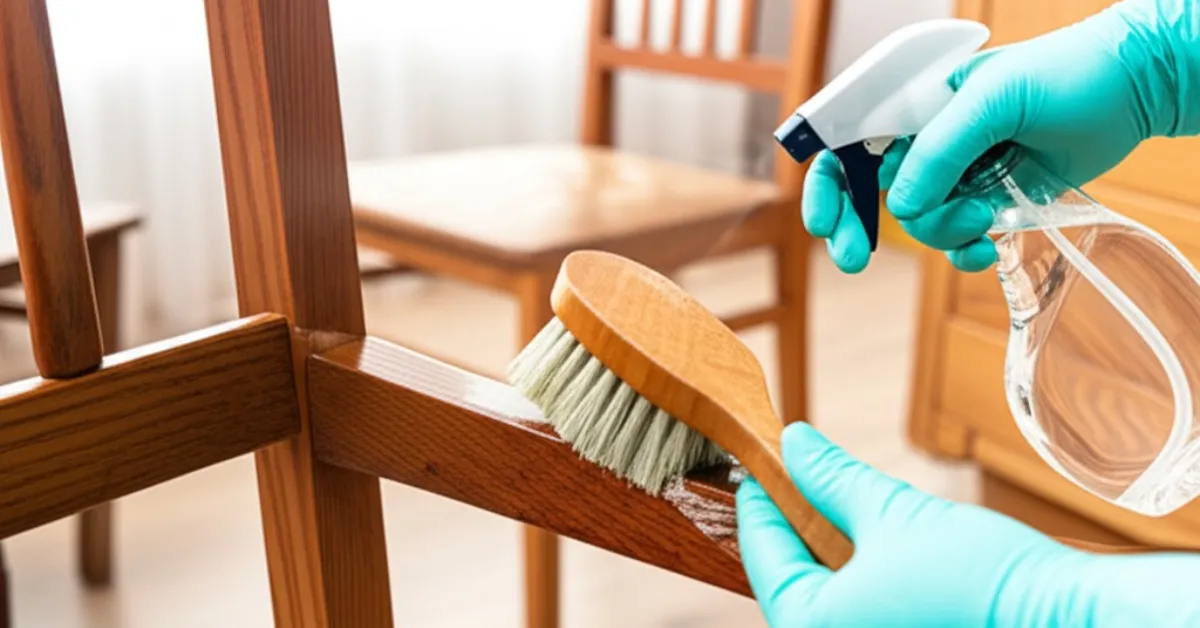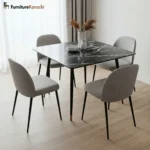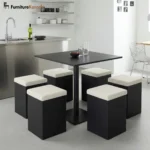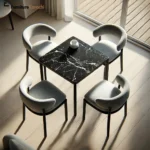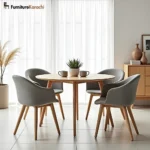Quick Summary:
To remove fungus from furniture, mix equal parts white vinegar and water, spray it on the affected area, let it sit for 10–15 minutes, then scrub gently with a brush. For stubborn spots, use baking soda and ensure proper ventilation to prevent fungus from coming back.
Fungus creeping up on your wooden chairs or upholstered sofa isn’t just an eyesore, it can damage the material and trigger allergies. Especially in places like Pakistan, where humidity levels can spike during monsoon seasons, this problem isn’t rare. Let’s break down a smart, practical process to remove fungus safely and keep your furniture looking fresh.
Why Does Furniture Get Fungus?
Before you tackle the problem, it helps to know why it’s there in the first place. Usually, fungus on furniture happens due to:
- High humidity
- Poor air circulation
- Water spills or leaks
- Furniture placed directly against damp walls
If left unchecked, that greenish, whitish, or blackish patch can grow larger and ruin both the look and durability of your furniture.
Must Read: Struggling to Buy Furniture in Pakistan? Here’s a Better Way
What You’ll Need
Here’s your go-to list of tools and supplies:
- White vinegar
- Baking soda
- Clean cloth or sponge
- Soft-bristle brush
- Mild dish soap
- Spray bottle
- Protective gloves
- Mask (to avoid inhaling mold spores)
Step-by-Step Guide: How to Remove Fungus from Furniture
Step 1: Protect Yourself First
Before touching the affected area, wear gloves and a mask. Fungal spores can trigger respiratory issues. Make sure the room is well-ventilated.
Step 2: Vacuum Loose Spores
If the fungus is powdery or flaky, gently vacuum the area using a vacuum cleaner with a HEPA filter. Avoid spreading spores around.
Step 3: Apply Vinegar Solution
Mix equal parts of white vinegar and water in a spray bottle.
- Spray the mixture generously on the fungus.
- Let it sit for 10–15 minutes to break down the fungal growth.
Step 4: Scrub Gently
Using a soft-bristle brush or sponge, scrub the area in small circles. Don’t press too hard—especially on wood—to avoid scratches.
Step 5: Use Baking Soda for Tough Spots
If the fungus is stubborn, sprinkle baking soda directly on the surface and scrub again. Baking soda not only removes fungus but also neutralizes odors.
How to Deal with Wooden Furniture Specifically
For wooden surfaces like chairs, tables, or bed frames:
- Avoid soaking the wood. Excess moisture can make things worse.
- Wipe down with a slightly damp cloth after scrubbing.
- Let the wood dry naturally, preferably under a fan or near a window (but avoid direct sunlight that might warp the wood).
How to Prevent Fungus from Returning on Furniture
Once you’ve cleared the fungus, the real challenge is keeping it from making a comeback. Here are simple, practical habits that work especially well in humid environments like Karachi, Lahore, or Islamabad:
- Keep Rooms Ventilated: Open windows whenever possible. Use exhaust fans or ceiling fans to circulate air.
- Use a Dehumidifier: Helps control moisture levels, especially during the rainy season.
- Avoid Placing Furniture Against Damp Walls: Leave a small gap between the furniture and the wall for air circulation.
- Regular Cleaning: Wipe your furniture down with a dry cloth at least once a week.
- Silica Gel or Moisture Absorbers: Place them inside cabinets and drawers to absorb excess moisture.
Pro Tips from Real-Life Experience
These aren’t just generic suggestions—people in Pakistan’s coastal and humid regions actually swear by them:
- Sun-Drying Works: If possible, place smaller wooden furniture outside for a few hours in indirect sunlight. It helps kill hidden spores.
- Neem Oil Application: Some homeowners use a light coating of neem oil on wooden furniture. It acts as a natural antifungal and insect repellent.
- Tea Tree Oil Spray: A few drops of tea tree oil mixed with water can also work as a natural antifungal spray.
FAQs About Removing Fungus from Furniture
Q: Is it safe to use bleach on wooden furniture?
A: Not recommended. Bleach can damage wood’s finish and even dry it out, leading to cracks. Stick to white vinegar or mild soap.
Q: Can I use alcohol instead of vinegar?
A: Yes, rubbing alcohol can help remove fungus, especially on non-porous surfaces. But it’s less effective on porous wood compared to vinegar.
Q: How long does it take for fungus to disappear after treatment?
A: You’ll usually see results within a few hours to a day. For larger infestations, it may take two or three cleaning sessions.
Final Thoughts
Getting rid of fungus from furniture isn’t rocket science. It’s all about acting quickly, using the right cleaning methods, and keeping moisture in check afterward. Regular maintenance goes a long way, especially if you live somewhere humid like Karachi or Lahore.
Call to Action
Found this guide helpful? Share it with friends or family dealing with the same problem. And if your furniture’s beyond a simple cleaning job, consider reaching out to local carpentry or furniture repair services in your area for professional help!



